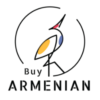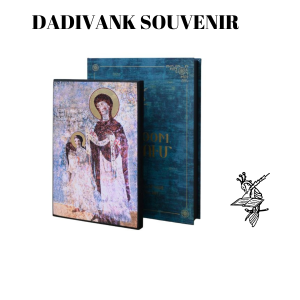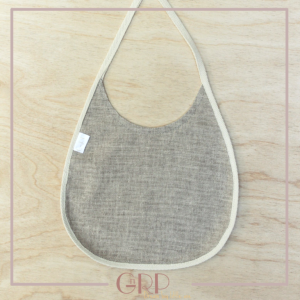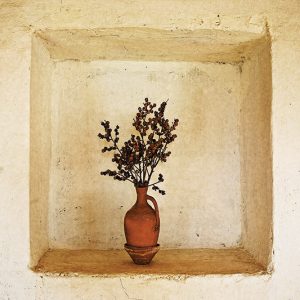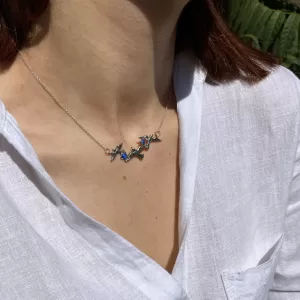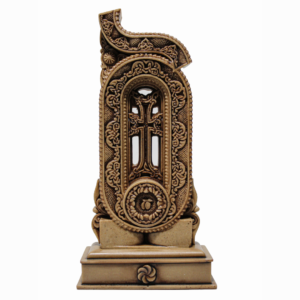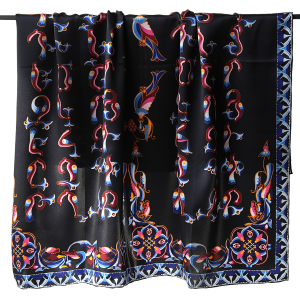-
“Dadivank” Souvenir
Dadivank Souvenir was created in honor of Dadivank Monastery of Artsakh and depicts a fragment of a 13th century fresco printed on a stylized wood piece and placed in a special packaging box. The souvenir box has explanatory texts in four languages, as well as a booklet with pictures from Dadivank Monastery and the fresco in full, again in four languages.
The history of the fresco depicting St. Nicholas the Wondermaker receiving episcopal insignia from Jesus Christ and St. Mary, goes to the 13th century when the Church which houses the fresco was commissioned by Arzou-Khatoon, Princess of Khachen, in memory of her perished husband and sons.
The souvenir was manufactured through lithography printing, with gold sheet, on flat MDF. Size: 13*19cm
$80.00$100.00“Dadivank” Souvenir
$80.00$100.00 -
A simple beauty.
A simple beauty. Print on canvas or photopaper
$45.00 – $100.00A simple beauty.
$45.00 – $100.00 -
-
Armenian Cross Souvenir | Armenian Letter Ծ
Dimensions: 8.5×4.5×17 cm
Material: Polyester resin
$60.00 -
Easter Egg Ornament
Handcrafted Easter Egg Ornament – A Touch of Spring Magic
Add a festive touch to your Easter décor with this charming handcrafted Easter Egg ornament. Perfect for hanging on trees, decorating baskets, or gifting a little springtime joy!
Each Ornament comes in diffrent Color and uniqe design 3.5″
$7.50Easter Egg Ornament
$7.50 -
-
Natural Honey
100% natural flower honey from Shirakamut village of Lori region.
Honey is not just a sweet treat, it is a miracle of nature, filled with flavor and nutrition.
Our honey is the result of careful care of bees and careful collection of nectar among flowering meadows and fields. It retains the richness of nature, conveying to us its unique taste and aroma. Every drop of honey is like the nectar of life, enriching our body and soul.
Enjoy the honey bouquet of our various varieties of honey: from delicate acacia to aromatic linden and rich currant honey. Whatever your preference, we have honey that will bring you joy every morning, enlivening the taste of your breakfasts and supporting your health and energy.
Buy our honey right now and discover the magical world of natural taste and nutrition. Immerse yourself in sweet heaven with our honey and enjoy every moment, rich in aroma and taste of this wonderful product.
2 / 2
$9.90Natural Honey
$9.90 -
Boho Crochet Tote
Handmade Boho Crochet Raffia Tote in Natural from our Arasan Collection.
$95.00 -
“Brduj” Eco Tote Bag
Eco Tote Bag “Brduj” from Armenian Food Collection by 3dzook
$25.00$33.25“Brduj” Eco Tote Bag
$25.00$33.25 -
“Trchnagir” Alphabet
The Armenian alphabet was created in 405 AD.
One of the greatest marks of the Armenian identity is the Armenian language. The exact origins of the Armenian language, however, are a little bit obscure. Such is the case with many ancient languages. Serious scholarship starting from the 19th century has placed Armenian among the wider family of Indo-European languages, although it forms its own separate branch within that group. So the language does not have any close relatives today, even Indo-European ones, such as Spanish and Portuguese or Russian and Polish might be considered.Armenian is also unique in its writing system. The Armenians use their own alphabet which was, by tradition, created following the studies and meditations of a monk, Mesrop Mashtots, in the early 5th century AD. Christianity had already been accepted as the national religion for a hundred years in Armenia, but the Bible was not yet available in the native language. The tradition goes that the main motivation to come up with a separate Armenian alphabet was in order to translate the Bible in such a way that would be accessible and suitable for the language and the people.
Mesrop Mashtots – who has since been venerated as a saint, as the patron of teaching and learning for Armenians – accomplished the task in the year 405 AD, thus setting the stage for a rich trove of works of religion and history, science and philosophy, illuminated manuscripts, and published books in the millennium and a half that followed, continuing on today. A major road in the capital of Armenia, Yerevan, is named for Mashtots, and one end of it is the apt location for the Matenadaran, the national repository of manuscripts which also functions as a research institute and museum.
$110.00“Trchnagir” Alphabet
$110.00
